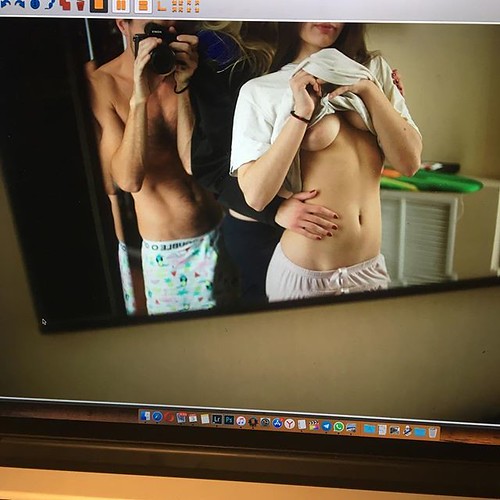Ed two latent aspects encompassing odd beliefs and anomalous perceptions. Nevertheless, the extraction of three factors resulted in two a lot more homogeneous subfactors representing dissociative anomalous perceptions and MedChemExpress KPT-8602 Hallucinatory anomalous perceptions (see Table , for the aspect option). 3 corresponding scales have been made, depicting odd beliefs (OB; .), dissociative anomalous perceptions (DAP; .), and hallucinatory anomalous perceptions (HAP; .). OB correlated moderately together with the anomalous perceptions scales (HAP, rs p CI .; DAP, rs p CI .). DAP and HAP also correlated moderately (rs p Issue loadings greater than absolute . are in boldface (Tabachnick and Fidell,). Item (olfactory sensations) did not load substantially on any with the things. When making use of oblique rotations, factor loadings might be higher than a single as they’re not correlations (Williams and Child,). Items not incorporated within the corresponding subscales.CI .). OB had been most often reported, followed by HAP, and DAP (see Table , for the  descriptive statistics).Analysis of Partnership in between Exceptional Experiences Subscales and Clinical SymptomsIn order to assess convergent and discriminant validity, the EE subscale scores were correlated with good, disorganized, and negativelike symptoms (see Table , for the correlation matrix). OB, DAP, and HAP correlated with PLE ranging from weak correlations (SPQ suspiciousness, rs .) to stronger correlations (SPQ paranormal beliefs, rs .). Additional, the EE subscale scores correlated weakly with disorganizedlike deficitsFrontiers in Psychology Unterrassner et al.PsychoticLike Experiences Wholesome IndividualsTABLE Descriptive TCS-OX2-29 biological activity statistics. Scale Median Mean (SD) RangeRevised Exceptional Experiences Questionnaire (PAGER) Total score Subscale Odd beliefs (OB) Subscale Hallucinatory anomalous perceptions (HAP) Subscale Dissociative anomalous perceptions (DAP) Schizotypal Personality Questionnaire (SPQ)Total score Physical Anhedonia Scale (PAS) Revised Symptom Checklist (SCLR)International severity indexSD, normal deviation. N . . . .HAP, paranormal beliefs, unusual perceptual experiences, and suspiciousness. The GSI positively correlated with OB, DAP, HAP, concepts of reference, paranormal beliefs, unusual perceptual experiences, suspiciousness, STS, and SNS. In summary, we consistently identified that PLE and EE correlated positively with common psychological burden and negatively with greater educational achievement.Gender Evaluation of Exceptional Experiences and Subclinical SymptomsScores of odd beliefs (OB), dissociative anomalous perceptions (DAP), hallucinatory anomalous perceptions (HAP), the SPQ subscales, schizotypal indicators (STS), schizophrenia nuclear symptoms (SNS), as well as the Physical Anhedonia Scale (PAS) have been tested for sex variations. Females (Mdn ) scored greater than men (Mdn ) on OB (U , Z p r CI .). Women also trended toward reporting far more HAP (Mdn ) than men PubMed ID:https://www.ncbi.nlm.nih.gov/pubmed/15311562 (Mdn ; U , Z p r CI .). Further, females scored higher than males on paranormal beliefs (Mdn , Mdn , U , Z p r CI .) and
descriptive statistics).Analysis of Partnership in between Exceptional Experiences Subscales and Clinical SymptomsIn order to assess convergent and discriminant validity, the EE subscale scores were correlated with good, disorganized, and negativelike symptoms (see Table , for the correlation matrix). OB, DAP, and HAP correlated with PLE ranging from weak correlations (SPQ suspiciousness, rs .) to stronger correlations (SPQ paranormal beliefs, rs .). Additional, the EE subscale scores correlated weakly with disorganizedlike deficitsFrontiers in Psychology Unterrassner et al.PsychoticLike Experiences Wholesome IndividualsTABLE Descriptive TCS-OX2-29 biological activity statistics. Scale Median Mean (SD) RangeRevised Exceptional Experiences Questionnaire (PAGER) Total score Subscale Odd beliefs (OB) Subscale Hallucinatory anomalous perceptions (HAP) Subscale Dissociative anomalous perceptions (DAP) Schizotypal Personality Questionnaire (SPQ)Total score Physical Anhedonia Scale (PAS) Revised Symptom Checklist (SCLR)International severity indexSD, normal deviation. N . . . .HAP, paranormal beliefs, unusual perceptual experiences, and suspiciousness. The GSI positively correlated with OB, DAP, HAP, concepts of reference, paranormal beliefs, unusual perceptual experiences, suspiciousness, STS, and SNS. In summary, we consistently identified that PLE and EE correlated positively with common psychological burden and negatively with greater educational achievement.Gender Evaluation of Exceptional Experiences and Subclinical SymptomsScores of odd beliefs (OB), dissociative anomalous perceptions (DAP), hallucinatory anomalous perceptions (HAP), the SPQ subscales, schizotypal indicators (STS), schizophrenia nuclear symptoms (SNS), as well as the Physical Anhedonia Scale (PAS) have been tested for sex variations. Females (Mdn ) scored greater than men (Mdn ) on OB (U , Z p r CI .). Women also trended toward reporting far more HAP (Mdn ) than men PubMed ID:https://www.ncbi.nlm.nih.gov/pubmed/15311562 (Mdn ; U , Z p r CI .). Further, females scored higher than males on paranormal beliefs (Mdn , Mdn , U , Z p r CI .) and  excessive social anxiety (Mdn , Mdn , U , Z p r CI .). Men reported additional symptoms of odd behavior (Mdn ) than females and they trended toward a greater mean score on physical anhedonia (Mdn .) than girls . No considerable sex differences had been found regarding STS or SNS scores. In summary, we found that ladies scored greater on positivelike symptoms and EE but reduced on disorganizedlike symptoms than men.ra.Ed two latent variables encompassing odd beliefs and anomalous perceptions. On the other hand, the extraction of three elements resulted in two far more homogeneous subfactors representing dissociative anomalous perceptions and hallucinatory anomalous perceptions (see Table , for the issue resolution). Three corresponding scales have been produced, depicting odd beliefs (OB; .), dissociative anomalous perceptions (DAP; .), and hallucinatory anomalous perceptions (HAP; .). OB correlated moderately using the anomalous perceptions scales (HAP, rs p CI .; DAP, rs p CI .). DAP and HAP also correlated moderately (rs p Issue loadings greater than absolute . are in boldface (Tabachnick and Fidell,). Item (olfactory sensations) didn’t load substantially on any on the factors. When employing oblique rotations, issue loadings is often greater than one as they’re not correlations (Williams and Youngster,). Products not included in the corresponding subscales.CI .). OB had been most regularly reported, followed by HAP, and DAP (see Table , for the descriptive statistics).Evaluation of Partnership between Exceptional Experiences Subscales and Clinical SymptomsIn order to assess convergent and discriminant validity, the EE subscale scores were correlated with constructive, disorganized, and negativelike symptoms (see Table , for the correlation matrix). OB, DAP, and HAP correlated with PLE ranging from weak correlations (SPQ suspiciousness, rs .) to stronger correlations (SPQ paranormal beliefs, rs .). Additional, the EE subscale scores correlated weakly with disorganizedlike deficitsFrontiers in Psychology Unterrassner et al.PsychoticLike Experiences Healthy IndividualsTABLE Descriptive statistics. Scale Median Mean (SD) RangeRevised Exceptional Experiences Questionnaire (PAGER) Total score Subscale Odd beliefs (OB) Subscale Hallucinatory anomalous perceptions (HAP) Subscale Dissociative anomalous perceptions (DAP) Schizotypal Character Questionnaire (SPQ)Total score Physical Anhedonia Scale (PAS) Revised Symptom Checklist (SCLR)Global severity indexSD, regular deviation. N . . . .HAP, paranormal beliefs, uncommon perceptual experiences, and suspiciousness. The GSI positively correlated with OB, DAP, HAP, suggestions of reference, paranormal beliefs, uncommon perceptual experiences, suspiciousness, STS, and SNS. In summary, we consistently found that PLE and EE correlated positively with general psychological burden and negatively with higher educational achievement.Gender Evaluation of Exceptional Experiences and Subclinical SymptomsScores of odd beliefs (OB), dissociative anomalous perceptions (DAP), hallucinatory anomalous perceptions (HAP), the SPQ subscales, schizotypal indicators (STS), schizophrenia nuclear symptoms (SNS), plus the Physical Anhedonia Scale (PAS) had been tested for sex variations. Females (Mdn ) scored higher than men (Mdn ) on OB (U , Z p r CI .). Women also trended toward reporting more HAP (Mdn ) than males PubMed ID:https://www.ncbi.nlm.nih.gov/pubmed/15311562 (Mdn ; U , Z p r CI .). Additional, females scored greater than guys on paranormal beliefs (Mdn , Mdn , U , Z p r CI .) and excessive social anxiety (Mdn , Mdn , U , Z p r CI .). Males reported extra symptoms of odd behavior (Mdn ) than women and they trended toward a higher mean score on physical anhedonia (Mdn .) than girls . No significant sex variations have been found concerning STS or SNS scores. In summary, we identified that women scored greater on positivelike symptoms and EE but lower on disorganizedlike symptoms than males.ra.
excessive social anxiety (Mdn , Mdn , U , Z p r CI .). Men reported additional symptoms of odd behavior (Mdn ) than females and they trended toward a greater mean score on physical anhedonia (Mdn .) than girls . No considerable sex differences had been found regarding STS or SNS scores. In summary, we found that ladies scored greater on positivelike symptoms and EE but reduced on disorganizedlike symptoms than men.ra.Ed two latent variables encompassing odd beliefs and anomalous perceptions. On the other hand, the extraction of three elements resulted in two far more homogeneous subfactors representing dissociative anomalous perceptions and hallucinatory anomalous perceptions (see Table , for the issue resolution). Three corresponding scales have been produced, depicting odd beliefs (OB; .), dissociative anomalous perceptions (DAP; .), and hallucinatory anomalous perceptions (HAP; .). OB correlated moderately using the anomalous perceptions scales (HAP, rs p CI .; DAP, rs p CI .). DAP and HAP also correlated moderately (rs p Issue loadings greater than absolute . are in boldface (Tabachnick and Fidell,). Item (olfactory sensations) didn’t load substantially on any on the factors. When employing oblique rotations, issue loadings is often greater than one as they’re not correlations (Williams and Youngster,). Products not included in the corresponding subscales.CI .). OB had been most regularly reported, followed by HAP, and DAP (see Table , for the descriptive statistics).Evaluation of Partnership between Exceptional Experiences Subscales and Clinical SymptomsIn order to assess convergent and discriminant validity, the EE subscale scores were correlated with constructive, disorganized, and negativelike symptoms (see Table , for the correlation matrix). OB, DAP, and HAP correlated with PLE ranging from weak correlations (SPQ suspiciousness, rs .) to stronger correlations (SPQ paranormal beliefs, rs .). Additional, the EE subscale scores correlated weakly with disorganizedlike deficitsFrontiers in Psychology Unterrassner et al.PsychoticLike Experiences Healthy IndividualsTABLE Descriptive statistics. Scale Median Mean (SD) RangeRevised Exceptional Experiences Questionnaire (PAGER) Total score Subscale Odd beliefs (OB) Subscale Hallucinatory anomalous perceptions (HAP) Subscale Dissociative anomalous perceptions (DAP) Schizotypal Character Questionnaire (SPQ)Total score Physical Anhedonia Scale (PAS) Revised Symptom Checklist (SCLR)Global severity indexSD, regular deviation. N . . . .HAP, paranormal beliefs, uncommon perceptual experiences, and suspiciousness. The GSI positively correlated with OB, DAP, HAP, suggestions of reference, paranormal beliefs, uncommon perceptual experiences, suspiciousness, STS, and SNS. In summary, we consistently found that PLE and EE correlated positively with general psychological burden and negatively with higher educational achievement.Gender Evaluation of Exceptional Experiences and Subclinical SymptomsScores of odd beliefs (OB), dissociative anomalous perceptions (DAP), hallucinatory anomalous perceptions (HAP), the SPQ subscales, schizotypal indicators (STS), schizophrenia nuclear symptoms (SNS), plus the Physical Anhedonia Scale (PAS) had been tested for sex variations. Females (Mdn ) scored higher than men (Mdn ) on OB (U , Z p r CI .). Women also trended toward reporting more HAP (Mdn ) than males PubMed ID:https://www.ncbi.nlm.nih.gov/pubmed/15311562 (Mdn ; U , Z p r CI .). Additional, females scored greater than guys on paranormal beliefs (Mdn , Mdn , U , Z p r CI .) and excessive social anxiety (Mdn , Mdn , U , Z p r CI .). Males reported extra symptoms of odd behavior (Mdn ) than women and they trended toward a higher mean score on physical anhedonia (Mdn .) than girls . No significant sex variations have been found concerning STS or SNS scores. In summary, we identified that women scored greater on positivelike symptoms and EE but lower on disorganizedlike symptoms than males.ra.